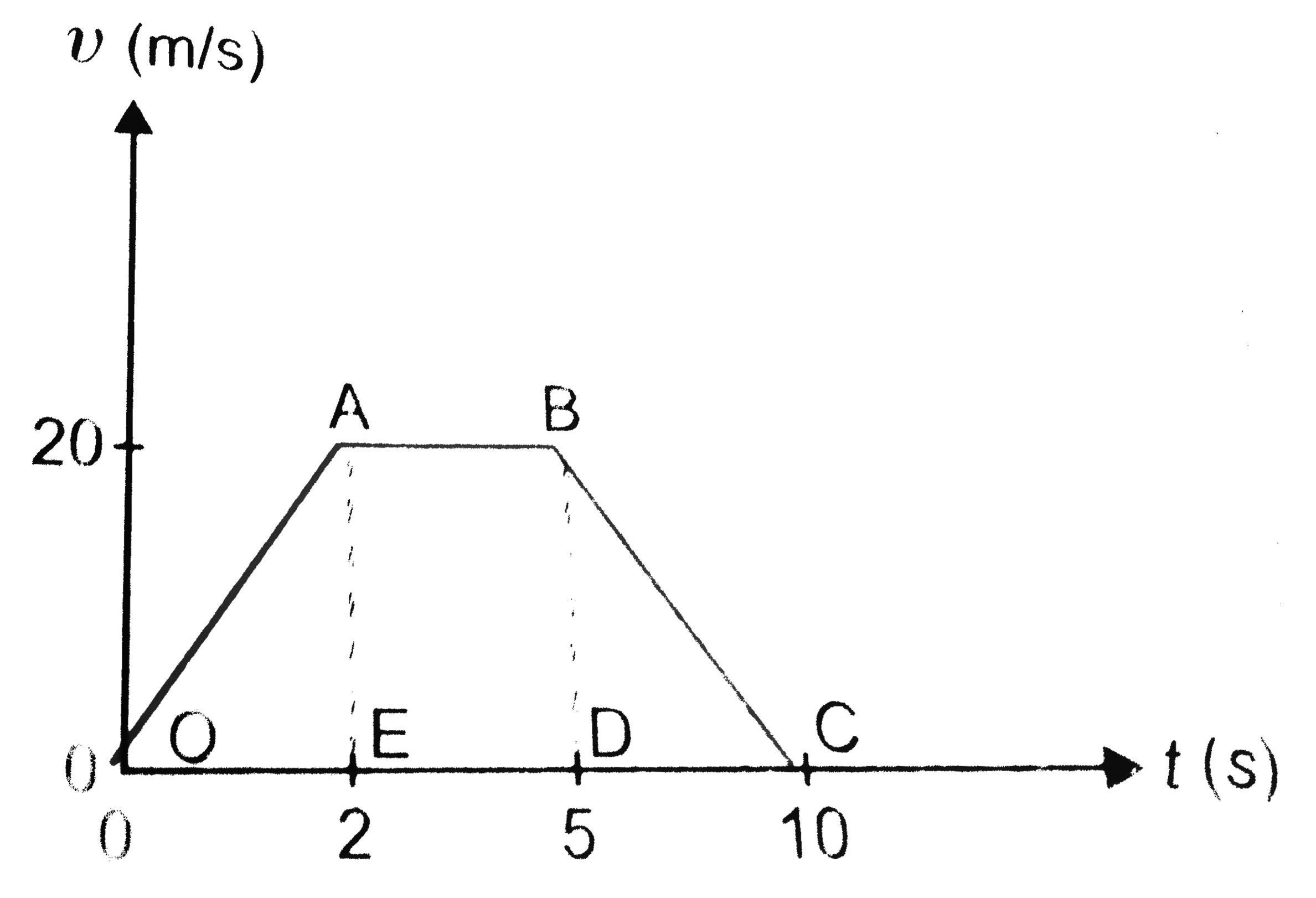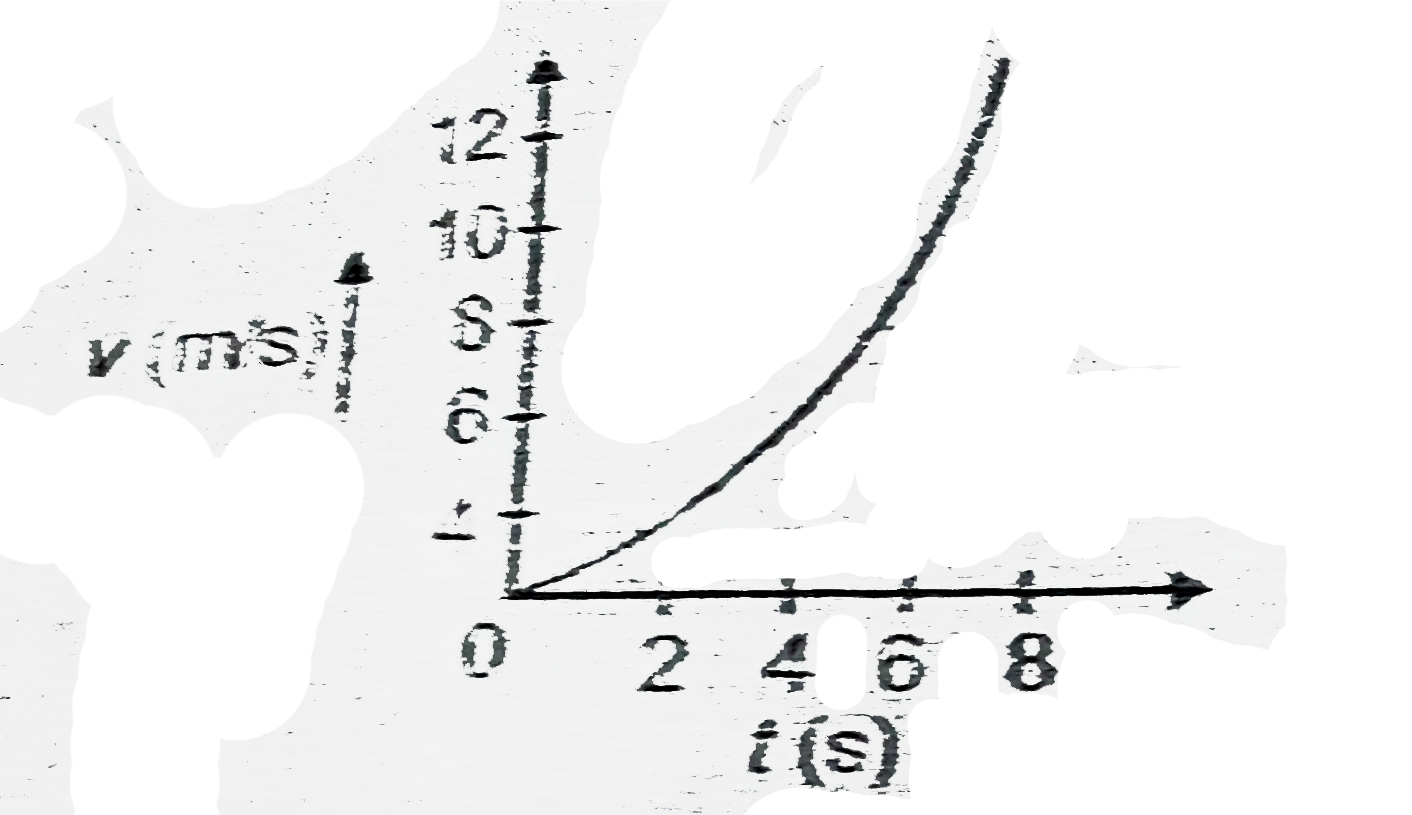Show that the area under the velocity-time graph of an object moving with constant acceleration in a straight line in certain time interval is equal to the distance covered by the object in that interval.
To show that the area under the velocity-time graph of an object moving with constant acceleration in a straight line during a certain time interval is equal to the distance covered by the object in that interval, we can follow these steps:
1. Understanding the Velocity-Time Graph:
- When an object moves with constant acceleration, its velocity changes uniformly over time. The velocity-time graph will be a straight line with a constant slope.
2. Define Initial and Final Velocities:
- Let u be the initial velocity of the object at time t=0.
- Let v be the final velocity of the object at time t=T.
3. Identify the Time Interval:
- The time interval during which the object accelerates is T.
4. Calculate the Area Under the Graph:
- The area under the velocity-time graph represents the distance traveled by the object. This area can be divided into two parts: a rectangle and a triangle.
- The rectangle represents the distance covered at the initial velocity u for time T.
- The triangle represents the additional distance covered due to the change in velocity from u to v.
5. Area of the Rectangle:
- The area of the rectangle is given by:
Arearectangle=Base×Height=T×u=uT
6. Area of the Triangle:
- The area of the triangle is given by:
Areatriangle=12×Base×Height=12×T×(v−u)
7. Total Area Under the Graph:
- The total area under the velocity-time graph (which equals the distance covered) is:
Total Area=Arearectangle+Areatriangle=uT+12T(v−u)
8. Simplifying the Total Area:
- Combine the terms:
Total Area=uT+12Tv−12Tu
=12Tu+12Tv=12T(u+v)
9. Distance Formula:
- The distance s covered by the object can also be calculated using the formula for uniformly accelerated motion:
s=(u+v)2×T
10. Conclusion:
- Thus, we have shown that the area under the velocity-time graph is equal to the distance covered by the object:
Total Area=Distance⇒12T(u+v)=s
- When an object moves with constant acceleration, its velocity changes uniformly over time. The velocity-time graph will be a straight line with a constant slope.
- Let u be the initial velocity of the object at time t=0.
- Let v be the final velocity of the object at time t=T.
- The time interval during which the object accelerates is T.
- The area under the velocity-time graph represents the distance traveled by the object. This area can be divided into two parts: a rectangle and a triangle.
- The rectangle represents the distance covered at the initial velocity u for time T.
- The triangle represents the additional distance covered due to the change in velocity from u to v.
- The area of the rectangle is given by:
Arearectangle=Base×Height=T×u=uT
- The area of the triangle is given by:
Areatriangle=12×Base×Height=12×T×(v−u)
- The total area under the velocity-time graph (which equals the distance covered) is:
Total Area=Arearectangle+Areatriangle=uT+12T(v−u)
- Combine the terms:
Total Area=uT+12Tv−12Tu
=12Tu+12Tv=12T(u+v)
- The distance s covered by the object can also be calculated using the formula for uniformly accelerated motion:
s=(u+v)2×T
- Thus, we have shown that the area under the velocity-time graph is equal to the distance covered by the object:
Total Area=Distance⇒12T(u+v)=s
Topper's Solved these Questions
Similar Questions
Show that area under the velocity-time graph of an object moving with constant acceleration in a straight line in certain time interval is equal to the distance covered by the object in the interval.
View SolutionDraw the velocity-time graph of an object moving with uniform negative acceleration.
View SolutionDraw the velocity-time graph of an object moving with uniform positive acceleration.
View SolutionDraw the position-time graph of a moving object, moving with zero acceleration.
View SolutionThe distance-time graph of the motion of an object moving with a contant speed is a straight line.
View SolutionThe distance-time graph of the motion of an object moving with a contant speed is a straight line.
View SolutionThe velocity-time graph of an object is shown below. The acceleration of the object is
 View Solution
View SolutionThe velocity (u)-time (t) graph of an object moving along a straight line is as shown is Fig. 2 (b) . 30. Calculate the distance covered by object between (i)t=0→t=5s (ii) t=0→t=10s.
 .View Solution
.View SolutionThe velocity (u)-time (t) graph of an object moving along a straight line is as shown is Fig. 2 (b) . 30. Calculate the distance covered by object between (i)t=0→t=5s (ii) t=0→t=10s.
 .View Solution
.View SolutionThe velocity-time graph of an object is given below. Calculate the average acceleration of the object in the time interval of 4 s to 6 s.
 View Solution
View Solution

